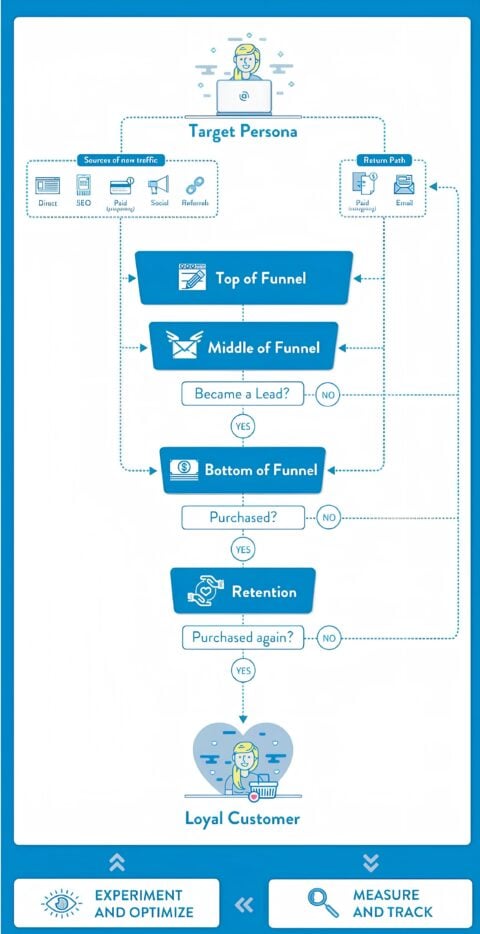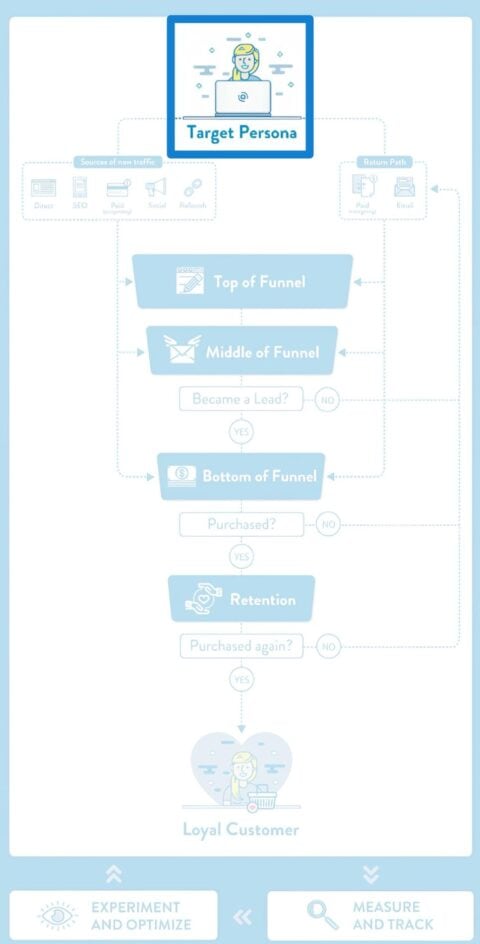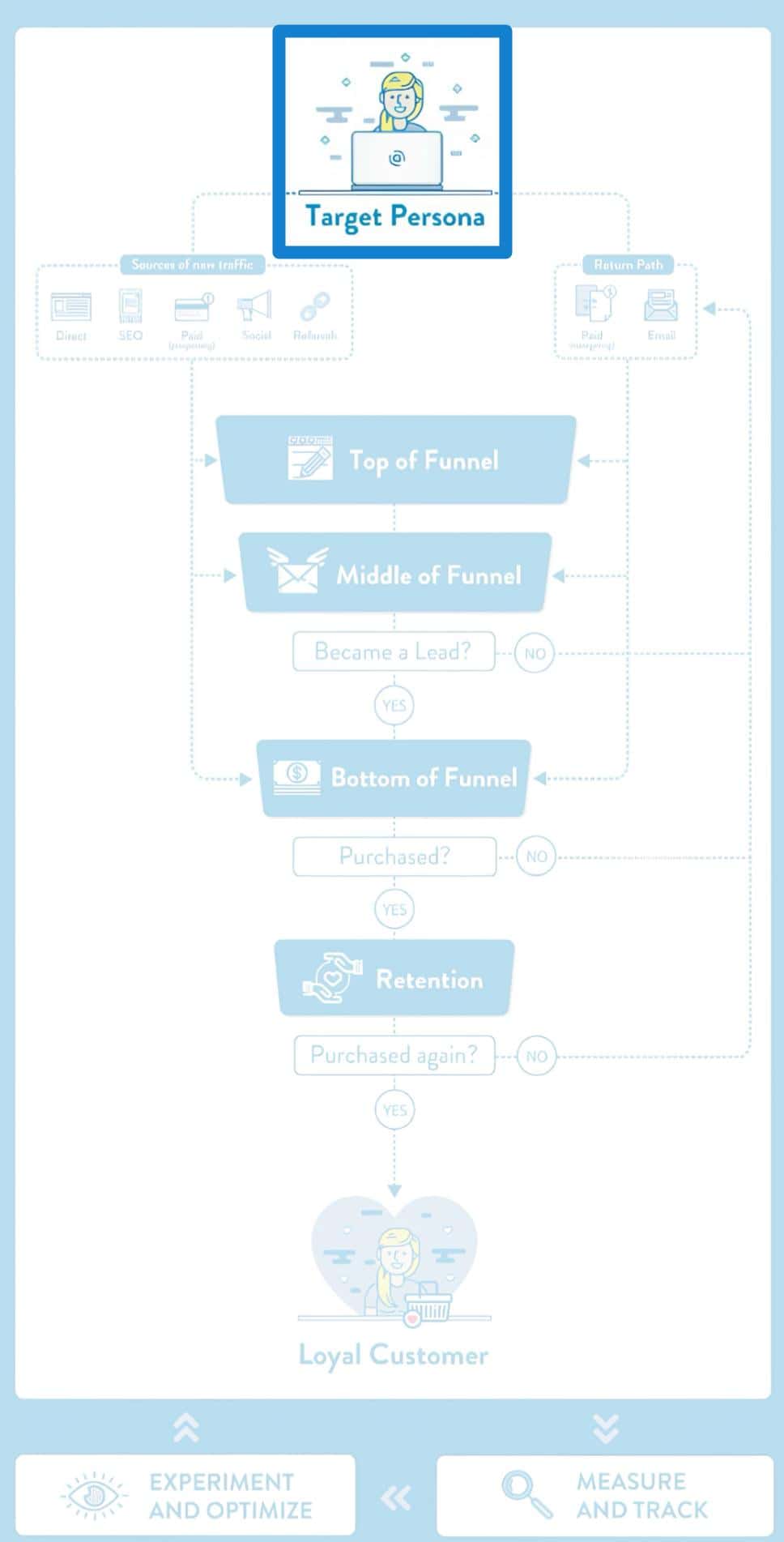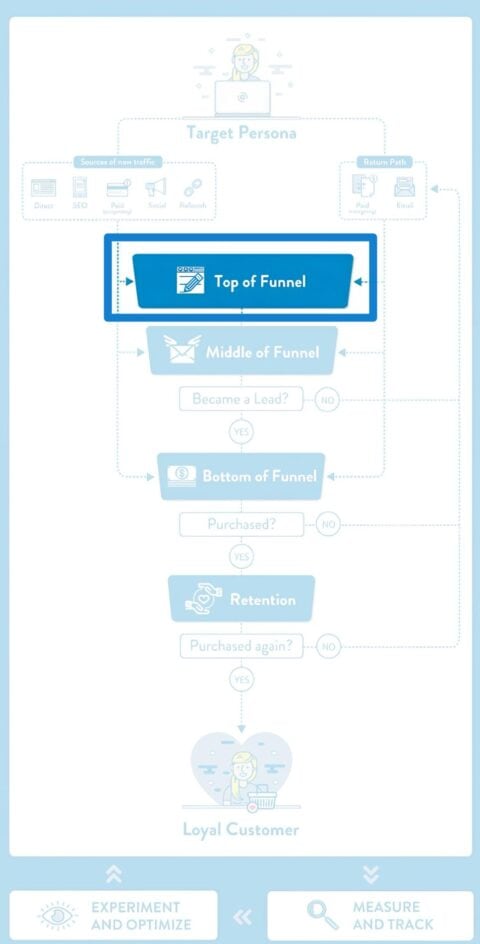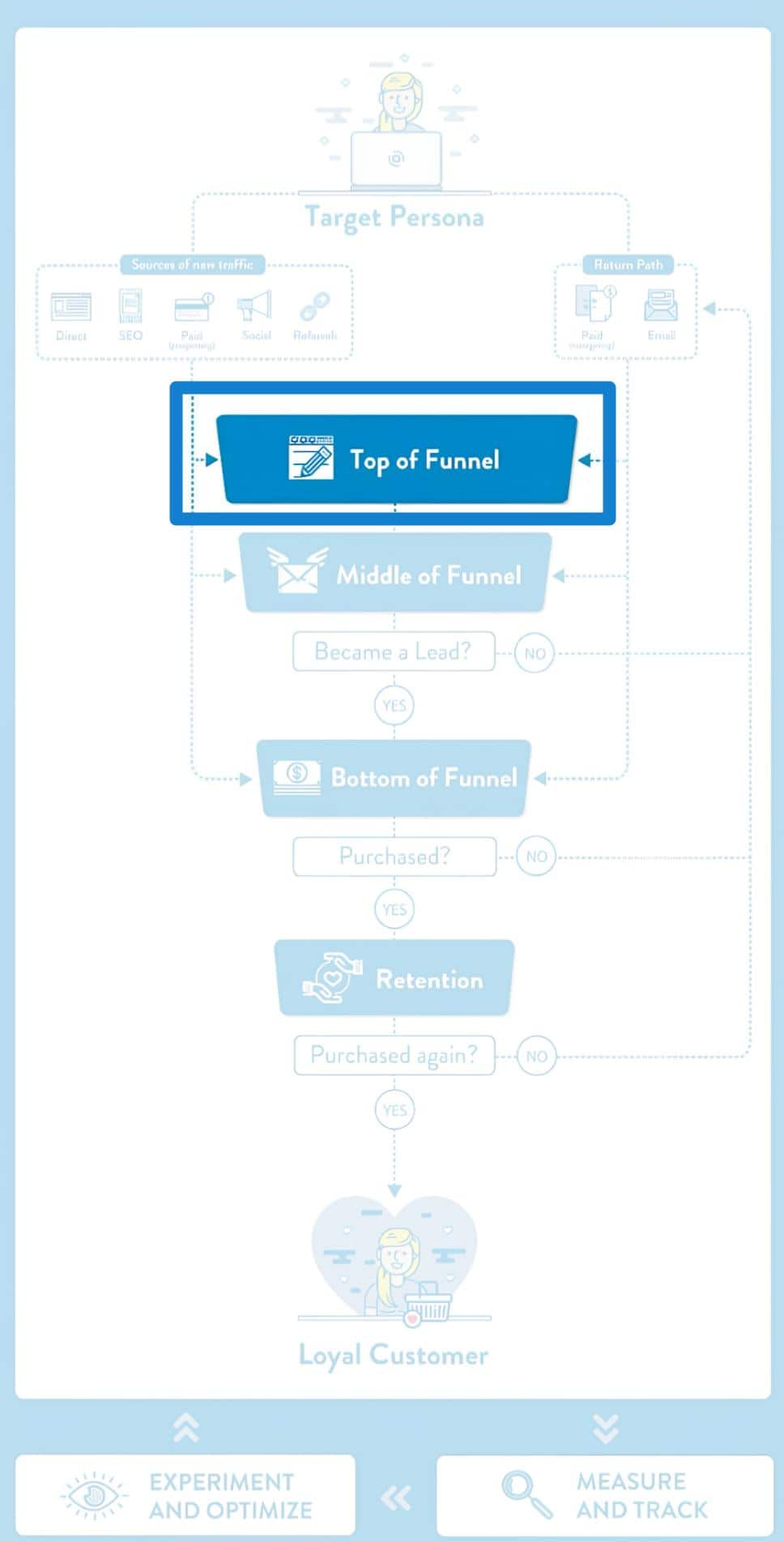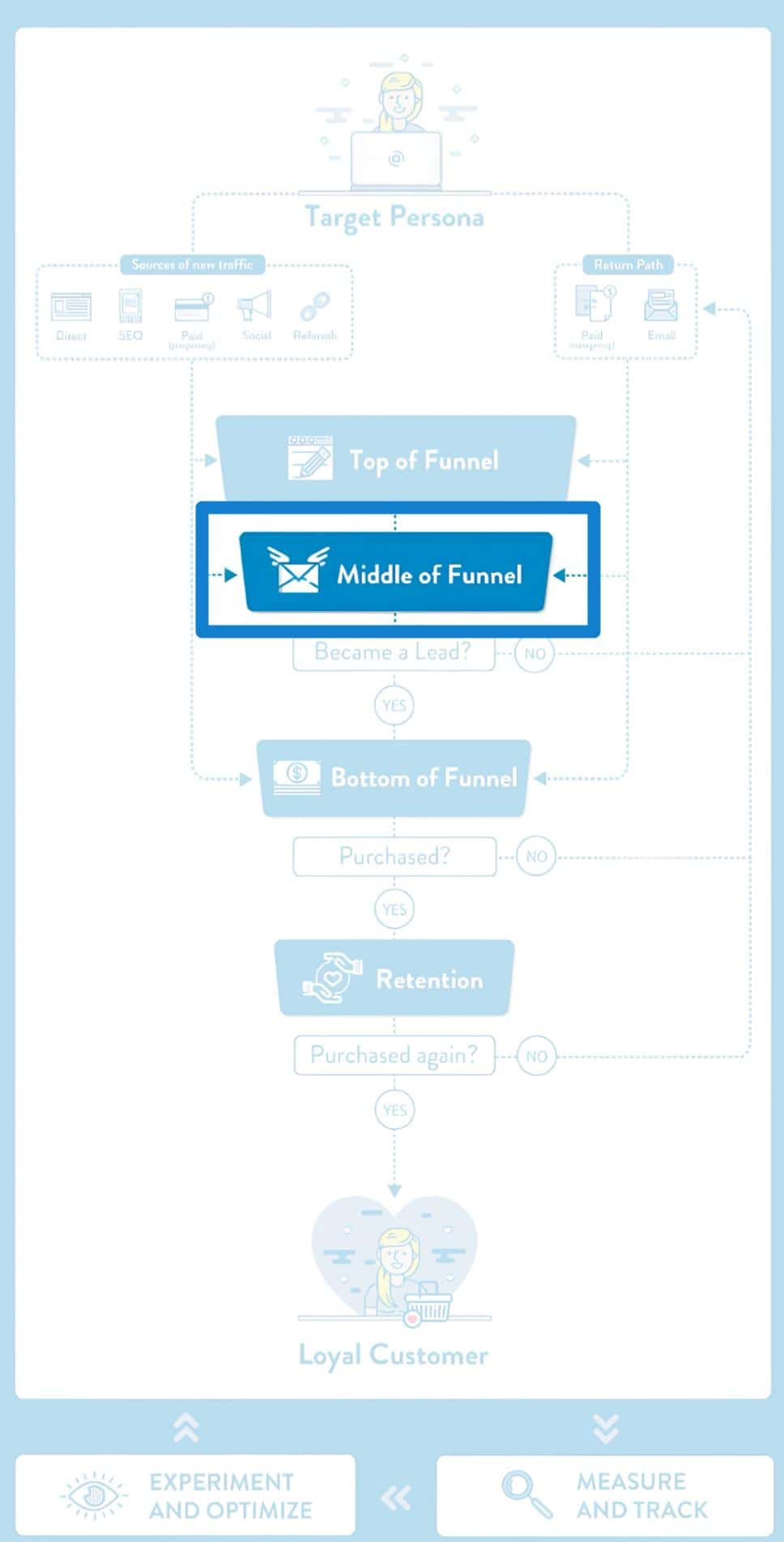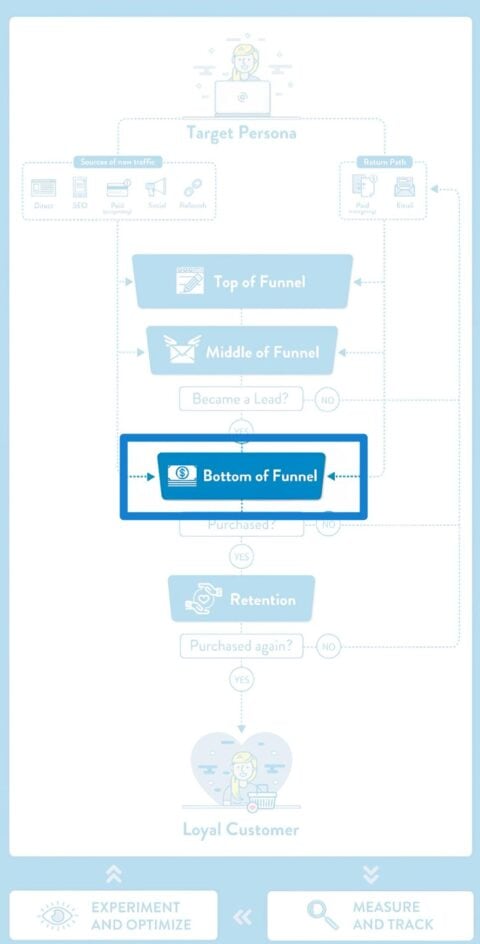📈
Your Goal at the Retention Stage: Increase Lifetime Value
In the retention stage, your marketing persona is already a customer of your product. Your objective is to increase the value you can extract from them directly by generating repeat purchases, upsells, or reducing churn; or indirectly by improving brand image or promoting referrals.
Customer lifetime value (CLV)
📝
Content Marketing
The objective of the content you'll create at the retention stage is to keep your existing customers happy by providing ongoing value (even after purchasing.)
Content ideas:
Monthly performance report email detailing the results achieved through our marketing strategies for both Sammy and Maxie.
Exclusive case study: 'How Continued Partnership with Us Led to Sustainable Growth for Your Business', highlighting long-term success.
Video tutorial series on advanced marketing strategies tailored for existing clients, addressing their evolving needs.
Quarterly client feedback webinar to gather insights on service satisfaction and opportunities for improvement.
Interactive Q&A session for past clients, focusing on sharing best practices and new marketing trends.
What to measure:
Engagement rates on performance reports
Feedback response rate from webinars
🔎
SEO
At the bottom of the funnel, you'll want to make sure your marketing persona can find all the information she needs to get the most of your product (e.g. knowledge base articles), or to solve any problems that may arise (e.g. support/contact page.)
Keyword ideas:
Keywords targeting existing client support queries like 'how to improve marketing campaigns with analytics'
Phrases such as 'success stories with [Agency Name]' during searches for continued partnerships
Long-tail keywords like 'ongoing marketing support for small businesses'
Search queries involving 'improving ROI with existing marketing partner'
Keywords like 'advanced marketing strategies for small retail businesses'
What to measure:
Organic traffic to support content pages
Keyword rankings for retention-focused terms
Customer engagement on SEO-optimized resources
🎯
Paid Advertising
At this stage of the funnel, you might choose to be run campaigns promoting of new features, upgrades, or promotions.
Target audience ideas:
[Remarketing] Facebook Ads: Target users who have previously engaged with our content but haven't utilized additional services.
[Remarketing] Google Ads: Individuals searching for follow-up services or continued marketing support from previous engagements.
[Prospecting] YouTube Ads: Target small business owners who have previously attended our webinars promoting advanced marketing topics.
[Remarketing] Facebook Ads: Customers who viewed case studies or testimonials recently without taking action.
[Remarketing] Google Ads: Clients looking for marketing updates or new campaign strategies post-service completion.
What to measure:
Click-through rate (CTR) on remarketing ads
Conversion rate on follow-up service inquiries
Return on ad spend (ROAS) for existing clients
📱
Social Media
Retention campaigns on social media revolve around building a sense of community with your existing customers. You'll do a lot of monitoring of brand mentions on social media.
Social media campaign ideas:
Encourage satisfied clients to share their success stories via social media, tagging the agency to build community trust.
Run a client appreciation campaign featuring customer success stories, thanking them for their partnership.
Post poll questions to existing clients regarding new services or areas they'd like enhanced support on.
Engage in conversations by responding to brand mentions and customer inquiries on social platforms.
Share industry updates and marketing tips tailored for current clients to keep them informed and engaged.
What to measure:
Engagement on client success posts
Increased followers from client advocacy
Responses to polls or inquiries made
📧
Email Marketing
Retention email campaigns will be a mix of educational emails (onboarding, activation, etc), transactional emails (reports, receipts, reminders, etc), and promotional emails (upgrades, upsells, etc.)
Email marketing campaign ideas:
Monthly check-in emails to discuss client progress and suggest additional services for improvement.
Exclusive offers for existing clients to incentivize further collaboration through discounted package upgrades.
Personalized birthday or anniversary emails celebrating milestones together with special promotions.
Feedback follow-up emails requesting testimonials or reviews based on previous services provided.
Newsletter featuring new marketing techniques and success tips tailored specifically for loyal clients.
What to measure:
Open rates on follow-up emails
Click-through rates for promotional offers
Response rates on feedback requests
🧪
Marketing Experiments
Your retention experiments will have the objective of maximizing lifetime value of existing customers.
Experiment ideas:
A/B test different formats for performance reports to identify what provides more valuable insights to clients.
Optimize email follow-up sequences to enhance engagement and conversion rates among previous clients.
Run split tests on landing pages designed for upselling additional services to see which versions perform better.
Gather client feedback via surveys to improve service delivery processes and tailor future offerings.
Analyze the churn prediction metrics to proactively reach out to clients showing decreased engagement patterns.
What to measure:
Client engagement scores post-report receipt
Conversion rates on upsell landing pages
Survey response rates for service improvements

